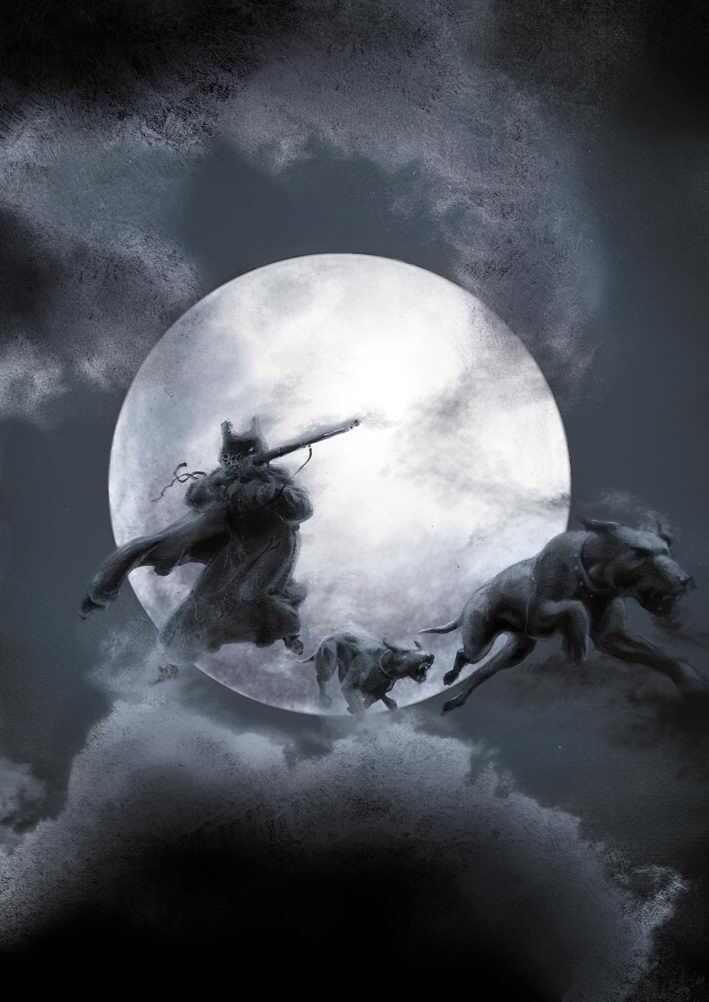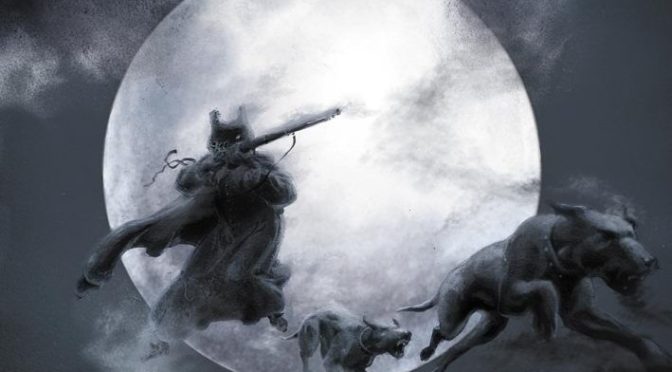“[We] never heard from him again; he never came back. However, ever since, many have heard his dogs whistling, while others have heard their sad barking. Occasionally, on clear nights with a full moon, the silhouettes of the priest, the dogs, and the hare can be clearly seen in their eternal wandering” (from Wiki Mitología Ibérica). Thus is the fate of the Black Hunter, forever condemned to his futile chase of a hare because he forsook his sacred duties.

- The Black Hunter goes by many names in the Basque Country, including Ehiztari beltza, Martin or Mateo Txistu, Errege-Xalomon (King Solomon), Joanito or Juaniko Txistularia, Salomon-apaiza (Priest Solomon), Prixki-Joan, and Martin-abade (Abbot Martin).
- While the myth is wide-spread in the Basque Country, it isn’t unique to the Basques. It appears in much of Europe, under the more general banner of the Wild Hunt. In France, the wild hunt was lead by King Arthur while in England and Germany, the leader was Woden. Other versions exist all over Europe.
- In the Basque Country, the Black Hunter is almost always a priest who cannot control his passion for hunting. In his story, he is usually giving mass when, in the middle of performing his sacred duties, he sees a hare (some say it was the devil in disguise trying to tempt the priest) pass by the open door of the church. He suddenly abandons mass and, calling his dogs, rushes out in pursuit of the rabbit. He disappears, never to be seen again.
- While no one ever sees him, his presence is felt. People hear his dogs howling in the distance and hear his whistles as he commands his dogs. Sometimes, people see their shadows ripple through the night. Sudden and violent winds often follow the Black Hunter. When the wind blows, rustling the leaves and shaking the trees, people say An dabiltz eiztarie ta txakurek: there go the hunter and his dogs. Some say his passage leads to fifteen days of wind.
Primary sources: Ehiztari beltza, Wikipedia; Hartsuaga Uranga, Juan Inazio. Mateo-Txistu. Enciclopedia Auñamendi. Available at: https://aunamendi.eusko-ikaskuntza.eus/es/mateo-txistu/ar-93400/; Auñamendi Entziklopedia. Salamon. Available at: https://aunamendi.eusko-ikaskuntza.eus/es/salamon/ar-120288/
Discover more from Buber's Basque Page
Subscribe to get the latest posts sent to your email.


